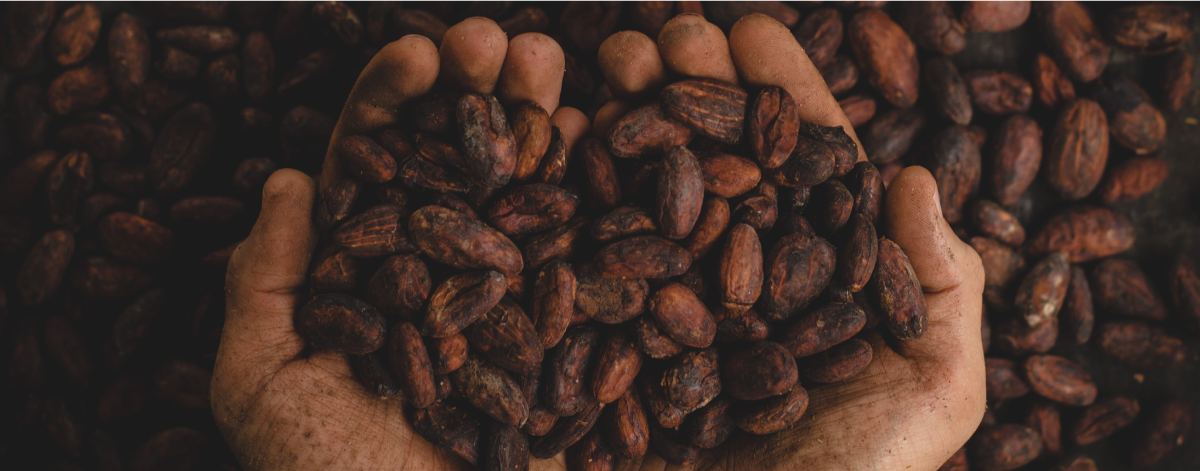HISPANIC HERITAGE MONTH: HISTORY OF CACAO AND CACAO CEREMONIES
by Rebeca Arredondo, 2-1-1
DID YOU KNOW?
The word “cocoa” comes from the Spanish word “cacao,” which comes from the Nahuatl word “cacahuatl.” Nahuatl is the language spoken by the Aztecs before Spanish became the official language in Mexico. At the same time, cacao comes from the Mayan words “Ka’kau, meaning “heart blood,” and “Chokala” meaning “to drink together.”
The cacao plant received its botanical name from Swedish scientist, Carl Linnaeus. He called it Theobroma (“food of the gods”) cacao. The Mayan believed that cacao was a key ingredient in restoring balance and connection to the divine.
FUN FACT
Cacao contains a natural compound called Teobromine, a natural stimulant that can help with better mental focus and creativity.
History of Cacao
The cacao tree is native to Mexico. More than 4,000 years ago, pre-Hispanic cultures along the Yucatan enjoyed cacao and as far back as Olmec civilization had cacao during spiritual ceremonies. Chocolate was introduced to Europe by the Spaniards and became a popular beverage by the mid-17th century. Spaniards also introduced the cacao tree into the West Indies, the Philippines, and the rest of Asia, while Europeans introduced it to South Asia and West Africa. In the Gold Coast, modern Ghana, cacao was introduced by a Ghanaian.
Cacao Ceremonies
A Cacao Ceremony is a sacred expression of an ancient ritual to foster the grounding and heat-opening properties of cacao. The goal is to uplift the communal mood, increase vitality, and open the heart, intuition, and other personal spiritual intentions. Ceremonial-grade cacao drinks have been used for emotional and spiritual healing for thousands of years.
These ceremonies were used to begin various kinds of rituals to help uplift and connect an intention set during the ritual with the source, the gods, as Mayans believed there were multiple gods for different purposes on Earth). For example, for harvest season, they would hold a cacao ceremonial ritual to thank Chaac, the god of rain, for the previous harvest and set the intention for a prosperous season, since Mayan land used to suffer from droughts. It was also used in marriage ceremonies to connect with the heart chakra and help with fertility, births, funerals to calm the spirit and prepare for the afterlife, and by priests in regular practices.
Today, Cacao Ceremonies are still practiced by many Native cultures that were handed down by their ancestors. They are also commonly practiced by the yoga community and spiritual groups because it has many benefits that promote inspiration, including the simple joys of connection and nutrition. However, the cacao ceremonies that have been adopted in the West can be practiced ritualistically and individually at home, similar to a form of tea meditation. However, ancient cacao ceremonies are traditionally performed as a communal group experience, with a trained cacao facilitator or shaman leading.
Watch a Mayan cacao experience in Choco-Story Museum in Uxmal, Yucatan Mexico.
Preparing Ceremonial Cacao
Cacao is imbued with intention by everyone who touches it, from harvesting to heating. Preparing the drink for the group must be done with the same intention and love.
Keep in mind that Ceremonial Cacao is not your typical chocolate or hot cocoa that we drink in cold weather. It uses pure, raw, non-processed, and sun-dried cacao beans. It can be made from scratch using raw cacao beans; however, it’s messy and not easy to break down. Some places sell raw unsweetened ceremonial-grade cacao, but it’s important to know where it comes from and that it’s fair trade for our Native indigenous cultures that still live off harvesting cacao.
Once you have the raw cacao, bring some water to a boil, and then add the cacao with love and intention. Slowly whisk until melted. You can even add some cinnamon or a little bit of cayenne pepper for extra taste.





